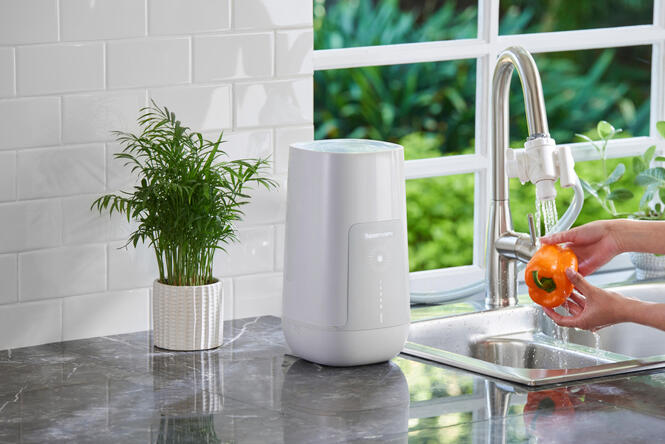Mineral Water Purify
Introduction
In an era where clean drinking water is paramount to our health and well-being, mineral water purifiers have emerged as essential appliances in homes and offices. Unlike basic filters, these purifiers not only remove harmful contaminants but also preserve—or even enhance—beneficial minerals like calcium, magnesium, and potassium. In this blog, we’ll explore why investing in a mineral water purifier makes sense, how these systems work, key features to look for, and tips for maintaining your purifier for years of clean, great‑tasting water.
Why Choose a Mineral Water Purifier?
- Health Benefits
- Essential Minerals: Unlike reverse-osmosis-only systems that strip out all solids, mineral water purifiers reintegrate or retain healthy minerals crucial for bone strength, nerve function, and electrolyte balance.
- Improved Hydration: Studies suggest that water containing natural minerals can be absorbed more effectively, helping you stay better hydrated.
- Safety and Taste
- Contaminant Removal: Advanced purification stages (e.g., activated carbon, UV sterilization) remove chlorine, heavy metals, bacteria, and organic compounds.
- Enhanced Flavor: By removing off‑tastes and odors but keeping desirable minerals, purified water tastes cleaner and more refreshing.
- Convenience and Cost Savings
- On‑Demand Purified Water: No more lugging home heavy bottles from the store.
- Eco‑Friendly: Reduces plastic waste compared to single‑use bottled water.
- Long‑Term Value: While initial investment may be higher, running costs are lower than constantly purchasing bottled or cartridge‑only filters.
How Mineral Water Purifiers Work
- Pre‑Filtration Stage
- Captures large particles like sand, rust, and sediment to protect downstream filters.
- Activated Carbon Filter
- Adsorbs chlorine, volatile organic compounds (VOCs), and improves taste and odor.
- Membrane or Ultrafiltration
- Removes pathogens (bacteria, viruses) and fine particulates.
- Mineralization Stage
- Adds essential minerals back into the water via mineral cartridges or natural mineral stones.
- UV Sterilization (Optional)
- Exposes water to ultraviolet light to inactivate any remaining microorganisms, ensuring microbiological safety.
Key Features to Look For
- Multi‑Stage Filtration: Aim for at least 4–5 stages, including sediment, carbon, membrane, and mineralization.
- NSF/ANSI Certification: Ensures performance standards for contaminant reduction have been met.
- Flow Rate: A higher flow rate means faster dispensing—look for 1–2 liters per minute for kitchen use.
- Filter Replacement Indicators: Automatic alerts help you know when it’s time to change cartridges.
- Installation Type: Countertop versus under‑sink models—choose based on available space and plumbing access.
- Maintenance Ease: Tool‑free cartridge changes and washable pre‑filters simplify upkeep.
Maintaining Your Mineral Water Purifier
- Regular Filter Changes
- Follow manufacturer guidelines—typically every 6–12 months for sediment/carbon filters, 12–24 months for mineral cartridges.
- Sanitization
- Every 6 months, sanitize the system housing and storage tank using a mild bleach solution or recommended cleaner.
- Monitor Water Quality
- Use TDS (Total Dissolved Solids) test strips monthly to ensure mineral levels and overall purity remain within optimal ranges.
- Check Seals and O‑Rings
- Inspect for wear or debris to prevent leaks and maintain system pressure.
Conclusion
A mineral water purifier is more than just a filter—it’s an investment in your health, convenience, and the environment. By choosing a system that effectively removes contaminants while preserving vital minerals, you’ll enjoy safer, better‑tasting water right from your tap. Remember to select a certified, multi‑stage purifier, stay on top of maintenance, and monitor your water’s quality regularly. Here’s to pure hydration and a healthier life!
Ready to upgrade your water? Explore our range of mineral water purifiers and take the first step toward cleaner, healthier drinking water today!











No Comments